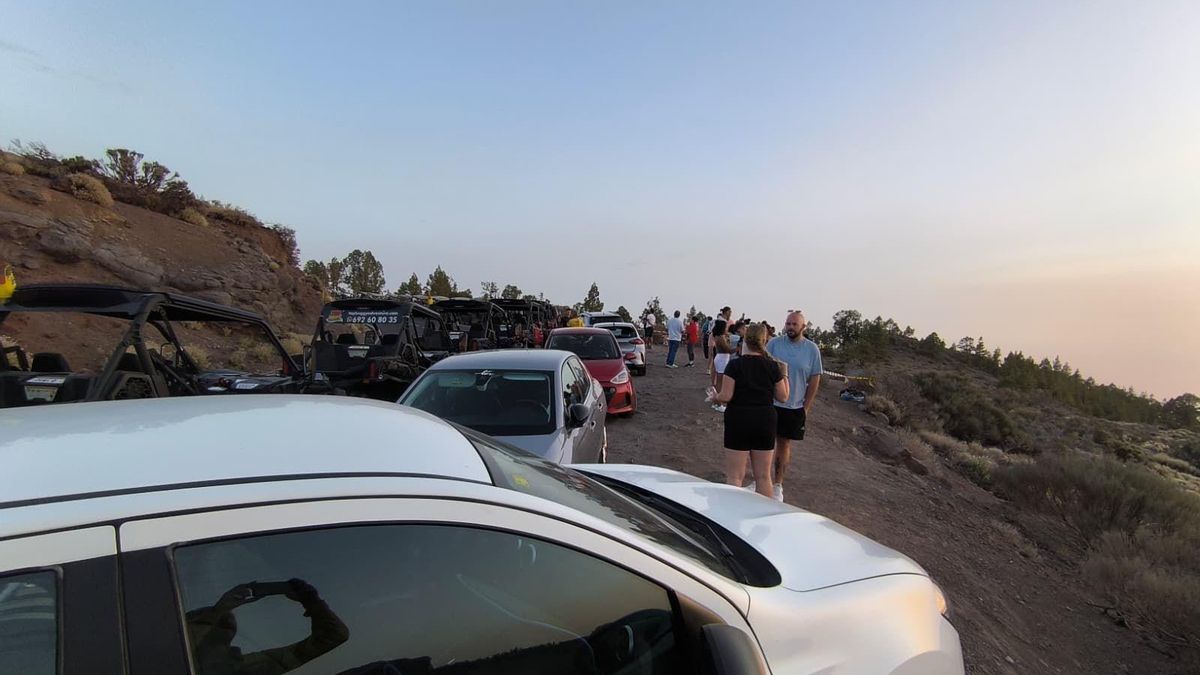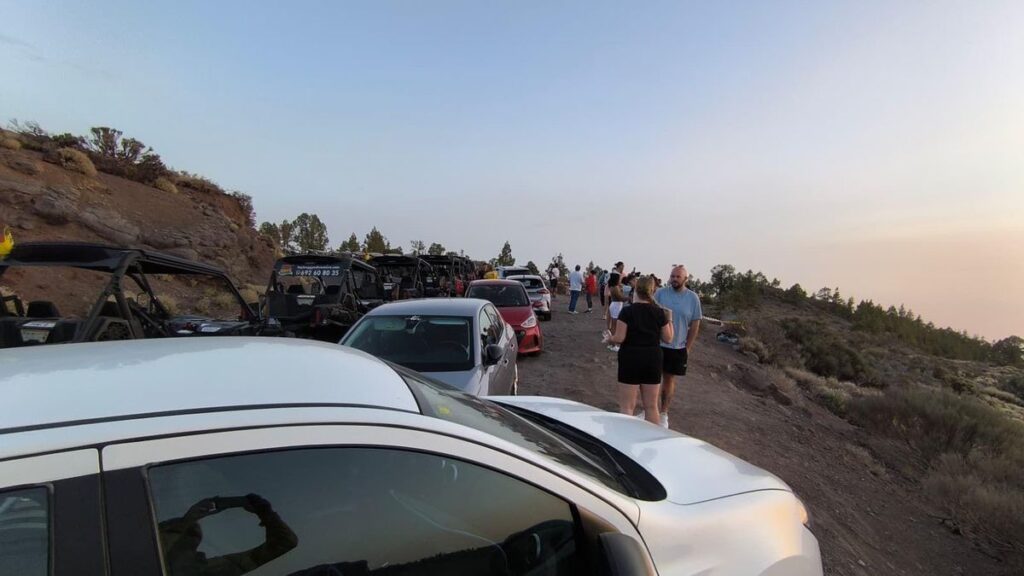A Natural Wonder Under Siege
It stands as one of the natural wonders of the world and a crown jewel of Spain and the Canary Islands: Teide volcano. As the third tallest volcano on Earth and the highest peak in Spain, its landscape is a treasure trove of unique species that have miraculously survived in a hostile, high-mountain environment, perfectly adapted to life among lava flows. Yet, a greater threat now endangers this priceless and unique enclave: tourists. Teide National Park in Tenerife received 5.2 million visits in 2024, a figure that shatters records and highlights a critical problem.
Crushing Numbers in a Fragile Space
The park’s visitor numbers are staggering. It received more than double the visits of other prominent Spanish parks like Sierra de Guadarrama (2.4 million) and even surpassed famous EU parks like Croatia’s Plitvice Lakes (2.2 million). With 5.2 million visitors, Teide welcomed more than double the entire population of the Canary Islands (2.2 million) and a million more visitors than the immensely popular Yosemite National Park in California. The critical difference? Yosemite spans over 3,000 square kilometers, while Teide covers less than 190. This powerful mountain and its imposing caldera are incredibly fragile, and the threats they face are multiplying.
Science Confirms the Human Footprint
A recent study published in the journal Global Ecology and Conservation confirmed that human pressure is responsible for the ecosystem around the volcano “not functioning fully.” For years, the solution to the park’s current situation has been hotly debated. The core of the problem lies in managing the overwhelming influx of people and their vehicles.
The Controversial Management Plan
In the last legislative term, a draft management plan (PRUG) was drawn up. It proposed banning various activities within the park, such as film shoots, bringing dogs, certain sports on trails, and beekeeping. Paradoxically, it also proposed increasing the daily number of visitors allowed to the Teide crater, one of the volcano’s most delicate areas. However, the most controversial proposal was about vehicle access. The plan suggested controlling private vehicle transit, requiring visits to be made only via shuttle buses (“guaguas”) from transport hubs on the park’s outskirts. Cars entering the park would not be allowed to stop except in specific parking areas, and a fee could be charged for their use—applying to residents and tourists alike.
Local Backlash and a Revised Proposal
The controversy was immense. Environmental, sports, hunting, and audiovisual associations protested, and even the Tenerife Island Council (Cabildo), then governed by the PSOE, joined opposition parties in calling the plan “nonsense” and accusing it of “stealing Teide” from the people of Tenerife. Now, with visitor numbers higher than ever and no measures implemented, the Cabildo has revived this PRUG, albeit with some changes. It is more lenient on restrictions for activities like cycling and filming. However, the most criticized proposal remains: controlling private vehicle access, which would now be completely prohibited during specific hours, with the obligation to visit the park only by shuttle bus. This time, the transport hubs would not be on the park’s margins but located further away at various points across the island.
No Distinction Between Resident and Tourist
While controlling the number of vehicles is a necessary measure to avoid the current state of collapse, criticism has flared up again because neither version of the plan distinguishes between residents and visitors. This means that if a Tenerife local wants to take their family up to Teide, they would have to do the same as a tourist: go to a shuttle bus station and join one of the organized tours. This has become a major point of contention for islanders who see the volcano as their most important icon, emblem, and source of pride.
A Change in Management, But Not in Reality
As of January 1st, the management of Teide National Park has been transferred to the Tenerife Island Council. In May, the president of the Cabildo, Rosa Dávila, announced that the corporation was taking “control” of the park and embarking on “an unprecedented transformation in its model for protecting the natural environment.” She announced a battery of measures, including an ecotax for non-resident visitors, a legal reform to toughen sanctions, an increase in the number of Environmental Agents, and a new PRUG. But after the announcements, nothing has changed on the ground at Teide.
Daily Chaos and Social Media Outrage
While the management plan is debated, the years pass, and Tenerife continues to see an increase in tourists and new residents. The park remains critically understaffed, with only six Environmental Agents for its protection. According to the Cabildo’s own data, reports of illegal activities in Teide skyrocketed from 100 in 2023 to 262 in 2024. In just the first four months of 2025, 98 reports were filed, mostly for illegal parking, unauthorized activities, unauthorized vehicle circulation on forest tracks, and illegal camping.
In the absence of daily control, infuriating scenes proliferate on social media, where these uncivil and often illegal behaviors are publicly denounced. Videos show off-road vehicles invading prohibited areas, cars parked outside designated spots, vehicles stopping for photos in the middle of the road, driving the wrong way, and passengers hanging out of windows. There are piles of trash left at viewpoints, and prohibited activities like concerts or yoga classes are held without shame in areas where, in theory, walking is not permitted.
The Resident Perspective
The list is enormous, as is the anger of Tenerife residents. A recurring proposal on social media is to ban rental cars, forcing tourists to use buses while allowing residents to visit “their mountain” as they always have. “Why should residents also pay for the tourist invasion?” wrote one user. Another lamented, “On a weekday, but the culprits are surely the residents. Anyway… always the same story.” The most demanded measure is increased surveillance in the National Park to penalize those who disrespect traffic signs and park regulations.
A Pioneering Solution or a Band-Aid?
Authorities often fail to enforce restrictions even during official alerts. A viral video from July showed numerous people smoking, throwing cigarette butts, and flying drones at a popular viewpoint during a high-temperature and forest fire risk alert, with no authority in sight to prevent it. In response, the Cabildo announced the creation of a “pioneering” surveillance unit to monitor and sanction possible environmental infractions in the island’s natural spaces that are disseminated through social media. However, this system does not prevent infractions from happening nor their spread online; it only serves to identify and, eventually, sanction them—a difficult task if the perpetrators are tourists who have already left the island.
Reaching a Boiling Point
The proliferation of these incidents in the island’s most emblematic landscapes—Anaga, Masca, Teno, and the imposing Teide—is pushing the coexistence between visitors and residents, which was harmonious until a few years ago, to a boiling point. It is no coincidence that Tenerife has become the epicenter of massive protests against mass tourism and the lack of measures to limit it. While the population demands change, both the Canary Islands Government and the Tenerife Cabildo refuse, with arguments that change periodically, to implement a tourist tax on overnight stays or adopt any measure that implies setting a limit on the tourism sector—even if it means safeguarding the most important natural jewels of the Canaries and the well-being of its inhabitants.


